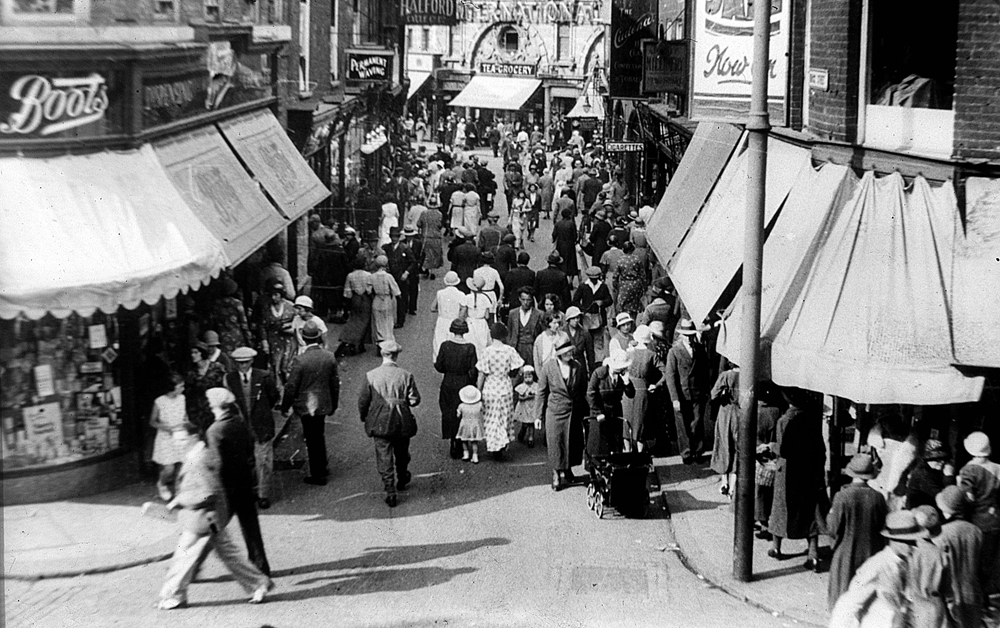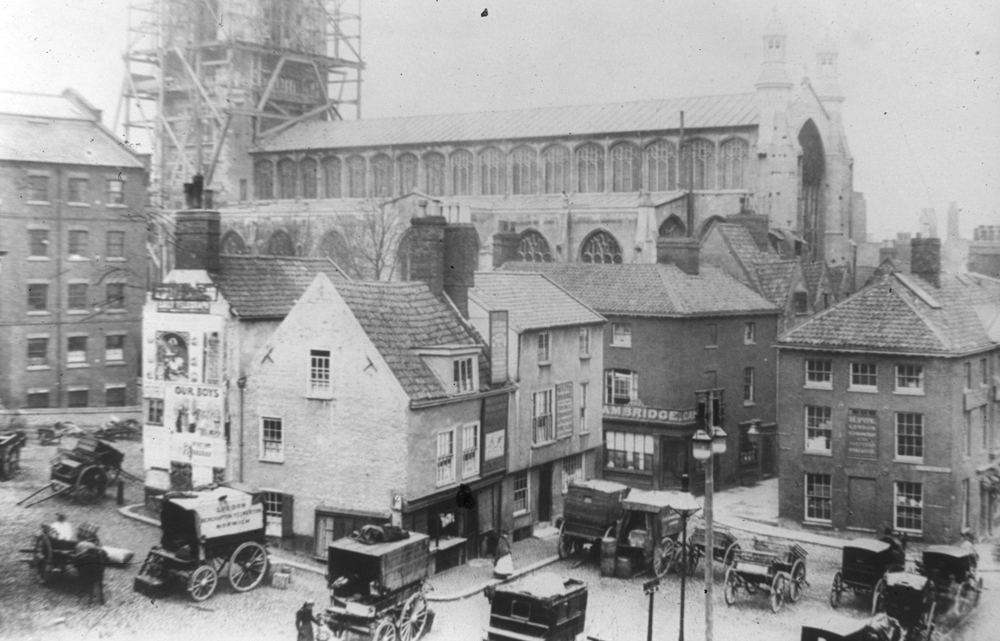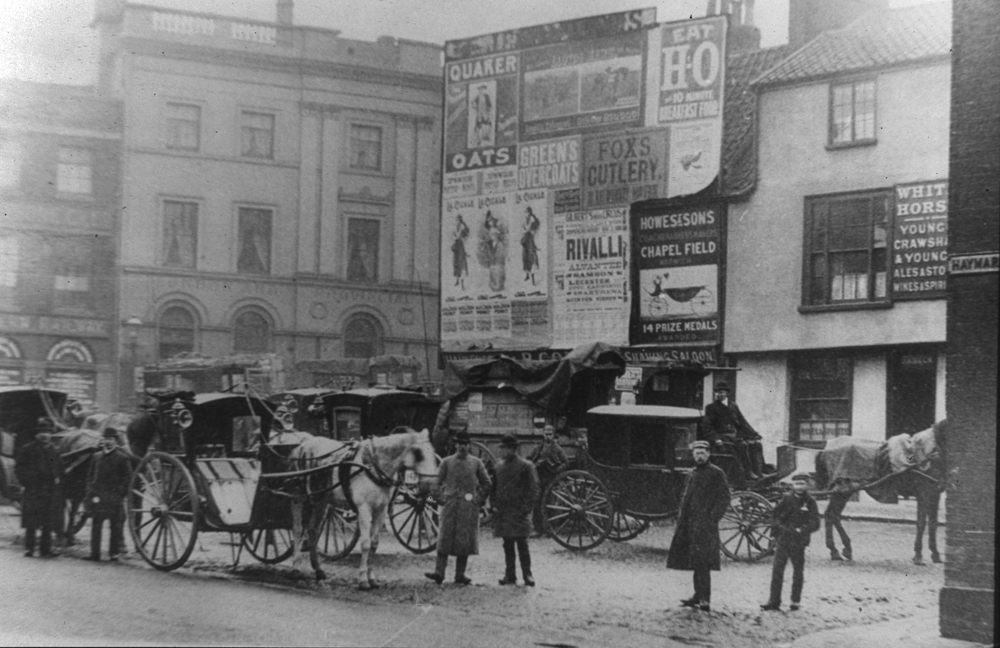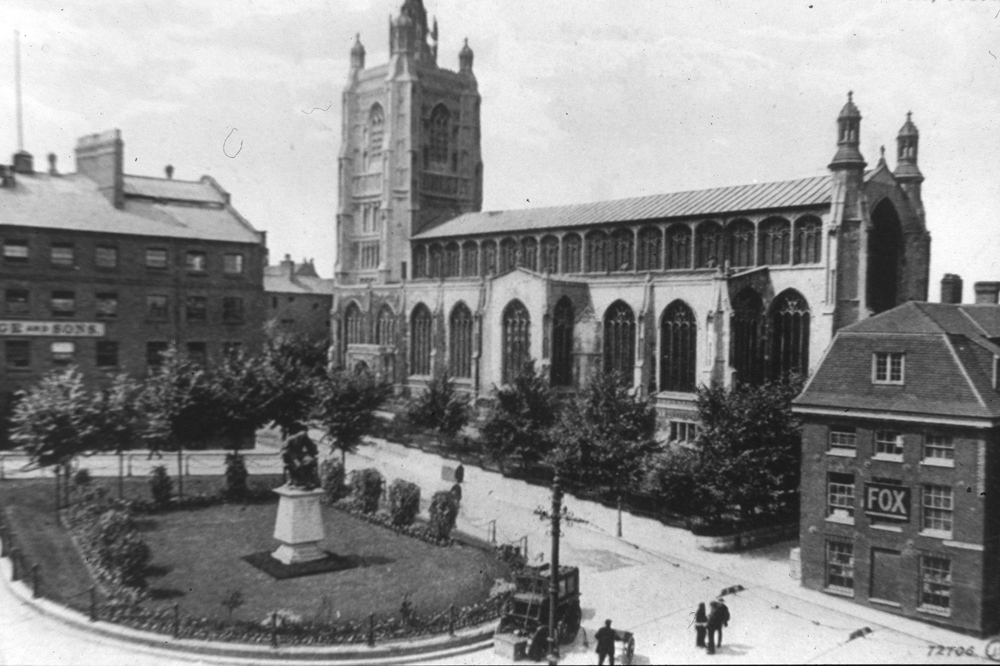Norwich street scenes from past times
Some streets in Norwich have changed dramatically but many are instantly recognisable. Most of us love to see the bustling scenes where people are going about their everyday business. Sometimes it is no different to today as we shop or simply socialise in the City. However, quite often we are given a completely different perspective on life with horses instead of cars, trams instead of buses and of course both men and women's fashions are always a good guide to dating any picture.


This image shows Brigg Street leading to the Haymarket. In the background we can see the distinctive façade of the Haymarket Chambers, occupied by the International Tea Company’s Stores (now the home of Pret a Manger).
This wonderful building, designed by George Skipper, was completed in 1902 for the grocer J. H Roofe who ran his shop on the ground floor.
It is interesting to consider the businesses on Brigg Street, some of which are still familiar to us today.
Most notable is Boots the Chemist which has a prominent corner site whilst we can also see a sign for the Halford Cycle Company.
Although we cannot make out their sign, R.G. Pilch (sports outfitters) are trading on the opposite side of the street.

The evocative photo is of the Old Haymarket with the White Horse pub in the foreground and a scaffolding clad St Peter Mancroft behind.
The church website informs us: ‘The tower was crowned with the lead-covered fleche, stone parapet and pinnacles, by the Architect A. E. Street in 1895.’
As the scaffolding around the tower was almost certainly for that purpose, we can adjudge that the photo was taken around that date.
Looking at the image, the astute amongst you will have noticed that although there are a number of carts and carriages in the photo– it is somewhat bereft of horses.
Are they tucked away in a livery stable nearby or possibly in the White Horse which had underground parking or to be precise, a cellar, which an enterprising landlord had converted into stables.

The White Swan buildings look somewhat more ramshackle and the premises next door is covered in billboards, suggesting it was taken after the first.
But not that much later, as we know that the licence was dropped in 1897 and the block of buildings demolished soon thereafter.
The area in front of the White Horse seems to have been subject to a change of use and use and is possibly temporarily operating as the taxi rank which was normally on the Walk?

By 1905 the vista looks very different. St Peter Mancroft, complete with its refurbished tower, is fronted by a green in the centre of which is a statue of Sir Thomas Browne (1605 – 1682).
Although not a native of Norwich, Sir Thomas (described as a polymath - an individual whose learning spans many subjects) lived in Norwich from 1637 and practised medicine here until his death.
The statue is still there but somewhat sadly the green was replaced by the existing paving when C&A (now Next) was built in the 1970s.



